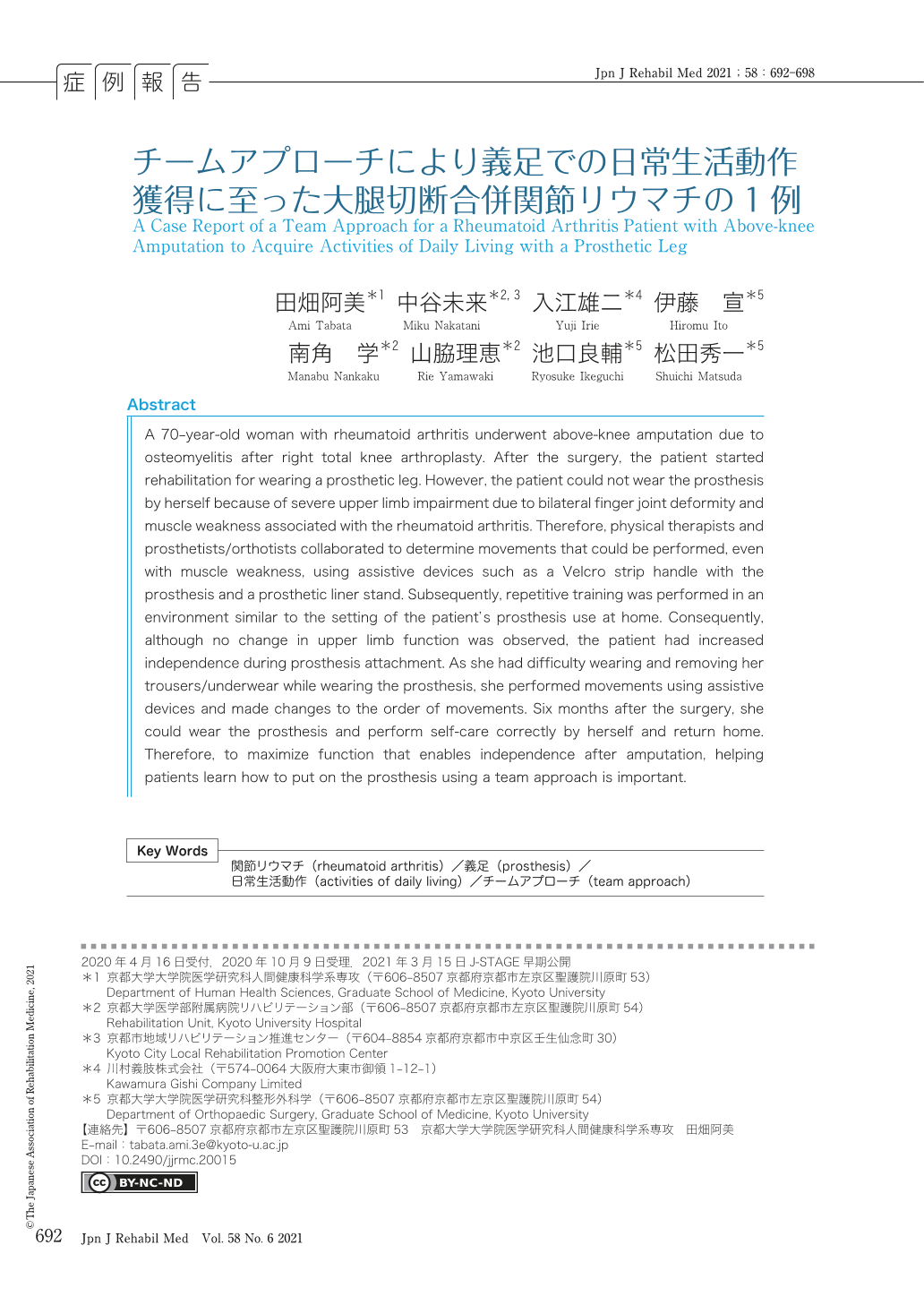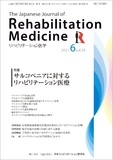Japanese
English
- 販売していません
- Abstract 文献概要
- 1ページ目 Look Inside
- 参考文献 Reference
はじめに
本邦における関節リウマチ(rheumatoid arthritis:RA)患者の大腿切断後の作業療法に関する報告はほとんどないが,RAなどの併存疾患のある高齢大腿切断者の自宅復帰,および義足を用いた生活の継続のためには,義足装着方法や,使用環境を考慮したリハビリテーション治療を行うことが重要である.
今回,右大腿切断術施行後に義足の装着が困難であったRAの症例を経験した.RA発症からの経過が長く,関節変形などの症状が進行していたため,身体機能面の改善が得られにくい状態であったが,義足や自助具の工夫とチームアプローチにより義足での日常生活動作(activities of daily living:ADL)を獲得し,自宅復帰が可能となった.本報告に際して患者本人より同意を得ている.
A 70-year-old woman with rheumatoid arthritis underwent above-knee amputation due to osteomyelitis after right total knee arthroplasty. After the surgery, the patient started rehabilitation for wearing a prosthetic leg. However, the patient could not wear the prosthesis by herself because of severe upper limb impairment due to bilateral finger joint deformity and muscle weakness associated with the rheumatoid arthritis. Therefore, physical therapists and prosthetists/orthotists collaborated to determine movements that could be performed, even with muscle weakness, using assistive devices such as a Velcro strip handle with the prosthesis and a prosthetic liner stand. Subsequently, repetitive training was performed in an environment similar to the setting of the patient's prosthesis use at home. Consequently, although no change in upper limb function was observed, the patient had increased independence during prosthesis attachment. As she had difficulty wearing and removing her trousers/underwear while wearing the prosthesis, she performed movements using assistive devices and made changes to the order of movements. Six months after the surgery, she could wear the prosthesis and perform self-care correctly by herself and return home. Therefore, to maximize function that enables independence after amputation, helping patients learn how to put on the prosthesis using a team approach is important.

Copyright © 2021, The Japanese Association of Rehabilitation Medicine. All rights reserved.


